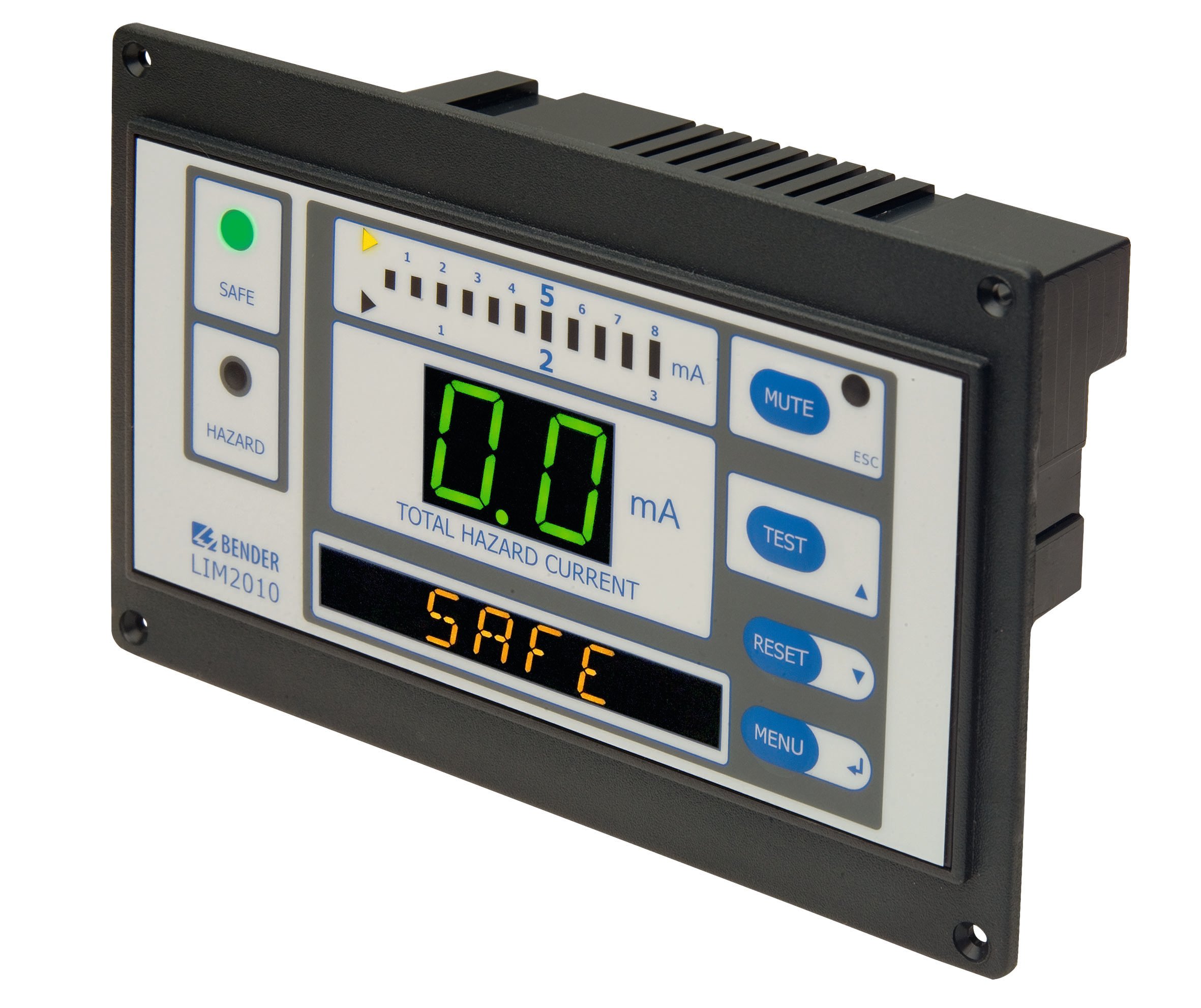What to do When a LIM Alarms

Line Isolation Monitors (LIMs) are required in operating rooms in the U.S. If unfamiliar with a LIM, it is easy to become intimidated by the different signals and features. The following article will help you become more familiar with what to do in the event of a LIM alarm.
LIM2010 Indications
(When the measured hazard current is less than the selected alarm level)- Green LED is illuminated
- Red Hazard LED is not illuminated
- LED bar graph has the green bars illuminated only
- (Yellow LED bars will be illuminated when hazard current is approximately within 20% from selected alarm level)
- Seven-Segment display that shows the Total Hazard Current (THC) displays a value (green) less than the selected alarm level (2mA or 5mA)
- Digital display reads SAFE
Alarm Condition
During an alarm condition (when the measured hazard current is more than the selected alarm level), the LIM2010 will indicate the following:- Green LED is illuminated
- Red Hazard LED is illuminated and flash at steady pace
- LED bar graph has the green, yellow and red bars illuminated
- Audible alarm activates
- Seven-Segment display that shows the Total Hazard Current (THC) displays a value (red) more than the selected alarm level (2mA or 5mA)
- Digital display reads HAZARD
Alarm Operation Procedure
- Press the Mute button to silence the audible alarm (yellow LED will illuminate).
- Record the leakage value shown on the THC display.
- Record any message(s) shown on the digital display.
- If the alarm happened shortly after an electrical equipment (s) was connected, remove the equipment that was connected last since the alarm could have been caused by the accumulated leakage current from the use of MANY properly functioning electrical equipment
- If the THC display is showing “E.F.”, disconnect the medical equipment that was connected last or call the maintenance engineer. This fault was likely caused by excessive system leakage (too many devices connected to the system) or a faulty piece of equipment.
- Please contact the manufacturer and have the following information available:
- Identify if the isolation power panels have been powered up and down prior to the error code.
- Was this unit newly installed? (If no, skip to question #5)
- Is the polarity of all the receptacles correct and consistent with each other?
- Has this unit been in operation for a period of time before the error code? If so, how long?
- What is the supply voltage for the unit(s) in question?
- In a separate sheet, provide a list of all the medical equipment that was connected to the isolation power panel at the time of the fault (including any power strips).
- List of equipment including Manufacture and Model connected to the system during the error.
- When the detected fault is cleared, the LIM will reset to normal/safe condition.
Final DO'S and DON'TS for electrical safety
✔ Do use only electrical devices with 3-conductor power cords and 3-pin plugs
✔ Do unplug equipment by grasping the plug, not the cord
✔ Do check for frayed, cracked, or exposed wiring on equipment cords
✕ Don’t use cheater plugs (3-wire to 2-wire adapters) - they eliminate the ground connection and result in possibility of serious shock hazards
✕ Don’t plug equipment into defective receptacles
✕ Don’t drape cords over hot or sharp objects
✕ Don’t run cords where they cause a tripping hazard
✕ Don’t use extension cords unless authorized
For more information about this application or to learn more about Bender technology related to your specific application, contact our team of experts.
This article is for informational purposes only. Bender provides the information "as is" without warranty and is not responsible for its accuracy or reliability. No warranties are given regarding its suitability for any specific circumstances.

.jpg)
.jpg?width=352&name=Blank%20300%20x%20175%20(17).jpg)
-1.jpg?width=352&name=Blank%20300%20x%20175%20(3)-1.jpg)
